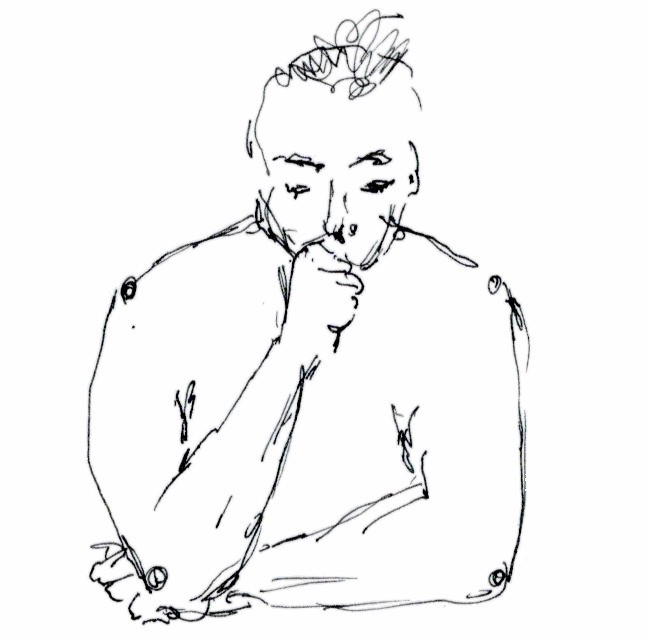
The ‘Sen’ — the Meridians of Thai Massage
4 March 2020
How to Let Go of Regret and be Free of ‘If Onlys’
24 January 2021
Problems.
We meet our friends or find someone online so that we can talk about them. We think about them as we go to bed at night and terrorise ourselves with them in the small hours. And we wish the people in our lives would stop talking about theirs so that we could talk about ours instead.

What are these things — these problems — that diminish and limit our lives?
Mental images, thoughts and bodily sensations, maybe sounds too, all come together to form the familiar experience which we call ‘my problem with …’.
My Granny used to describe such people as ‘worriers’ and would say ‘oh she’s such a worrier!’. The language of mental states has changed dramatically since her day and now the much more serious sounding ‘anxiety’ has taken over the job formally done by ‘worry’.
Mind at work
Maybe it’s just me, but as I ruminate over my current problem(s), I experience a subtle or not so subtle sense that if I can’t fix it, the consequences will be severe: I will die in poverty, I will be an outcast, people will laugh at me and so on. Or the emphasis might be on what I will miss if I don’t fix it, I will (forever) miss out on a wonderful life of pleasure, fulfilment, love and friendship.
Dutch painter Hieronymus Bosch (ca. 1450–1516) was a master at depicting the kinds of images our minds produce and the dark fantasies they create for us. He worked at a time when culture was organised around a belief that our behaviour in this life determined whether we ended up in heaven or hell after death. Our lives are now formed around and defined by much more complex and intricate belief systems. Concepts of heaven and hell persist in our imagination, nevertheless. We might not use those labels, but the pictures of annihilation and catastrophe still torment and terrorise us and in so doing, limit our lives and vision.

Digging a little deeper
We are all special cases. We all want to appeal against something!
Albert Camus The Fall (1956)
We can hopefully agree that this experience of being preoccupied by a problem is a mental and bodily phenomenon. On the mental side it is some version of ‘I don’t HAVE enough, and I want MORE’ and ‘Person X/Situation Y is WRONG and should be DIFFERENT.’ On the physical side, it’s a contraction, a feeling of tightness or tension, but it can also be deadness, weakness and emptiness.
All suffering is resistance
Rupert Spira
Solving nothing
Obsessing over my problems… guarantees one thing: I’ll get to keep them. My mind does everything it can to convince me that it’s essential to maintain an intense focus on what’s wrong, what I did wrong and how I should have been different.
It never works (or if it does, it’s a miracle). There’s a good reason for this: your mind is busying itself with lack, with your personal lack (aka ‘inadequacy’), with the world’s lack, with how other people lack or lacked what you need; and/or it’s busy with wrongness and how you are wrong, they wrong and the whole world is wrong.
This is like trying to find the North Pole in Antarctica — it looks like you’re in the right place when you’re in the middle of the snowy tundra, but you’re not.
Focusing on the source of pain
If you have toothache, you focus on the tooth and finding someone or something to treat it. Our brains naturally focus on the source of pain, so if we have a problem, it’s painful and we focus on it.
When it comes to mental pain, we know we should stop focusing on it, we wish we could stop thinking about it — but we can’t. On and on the mind goes, telling the same thing over and over and solving nothing. As Gail Brenner says in Suffering Is Optional: A Spiritual Guide to Freedom from Self-Judgment and Feelings of Inadequacy
If you could easily eliminate thoughts, then that’s what you would do, and you would be living happily ever after. But trying to eliminate them leaves you fighting with your experience and waiting for peace to come at some future time. So if you can’t stop or change these pesky thoughts that bring you down, what do you do?
There is a solution, an effective way to ease our minds and gently shift focus away from the contents of our thoughts and on to their source — that which gives life to all thoughts and sensations. That’s where peace lies.
Inside or outside?
Problems are caused by external events — right? A job you hate, the wrong partner, too little money on and on.
Yes. Of course we may need to act, to fix things, to get into a better situation in life. But when you really look, deep inside and experience your self, you will find that action plays only a bit part in our drama. It’s the thinking, imagining, regretting, ruminating, blaming, explaining, defending and catastrophizing that hurt us, that distort our present perception and wastes our energy. The thought that we won’t or can’t take the action preoccupies us and there’s probably a bodily contraction or collapse that matches that spin of mental energy.
Anatomy of a Problem
According to Hale Dwoskin, co-creator and teacher of the Sedona Method, what we label a problem has three aspects:
- Lack of awareness
Firstly, while we THINK endlessly about a situation, we are often not aware of how we FEEL about it because our feelings are fuzzy and mostly below conscious awareness and/or because we habitually suppress them as soon as we feel something brewing. Thinking is relentless, repetitive and often not very interested in solving anything; feeling gets things moving. - Rejection
When we are aware of how we feel, we often don’t like it, so we want to change it. We decide that we shouldn’t feel like we do. That’s when we start chastising ourselves, looking for someone to blame, asking ourselves endless Why? questions. We look to the past or into our character for explanations of why we are in the situation we are in and why things should be different. Or we just poor a big glass of wine. - All about me
And the third part is we think it’s personal, all about us. We might think that our feelings are especially hard for us to deal with or that it’s unusually difficult for us to take the action we might need to take or to face up to how we feel. This is also where ‘it always happens to me’ and ‘why me?’ belong.
How to let go
The Sedona Method processes are structured to deal with these elements — lack of awareness, resistance and thinking it’s all about me — piece by piece. As each component of the problem releases, your perspective shifts dramatically, your view of yourself, the world and everything in it opens up. Discomfort, stress and any sense of overwhelm start to melt away.
In summary, this is the process:
- Welcome/allow/acknowledge the issue and all the pictures, stories, bodily sensations and sounds that are part of your experience.
- Welcome/allow/acknowledge any wanting to do anything with any of that? Any resistance, thoughts that it shouldn’t be here, any wanting to change it, push it away, or hold onto it?
- Welcome/allow/acknowledge any and all sense that you are at the centre of all of it, that it’s personal, about you?
Here’s a video explaining what the Sedona Method is and how it works.
Why all this about feelings? Aren’t they the problem?
Feelings are not the problem and never have been. The problem is what we do with them. We compress them, argue with them and reject them.
Our relationships with other people are an exact mirror of our internal relationships and the same mechanisms are at work. How do you react if someone tells you not to feel something? Or if they push you away and ignore you because you are experiencing fear or uncertainty, how does that feel? Equally, if someone fusses over your every utterance, every breath, what does that do? Your responses (which I assume were negative) give us some clues about how best to deal with our own inner conflicts. When we take the time to inquire into our inner worlds, we often find that the seemingly separate parts of ourselves are battling one another.
‘I feel sad’ versus ‘Well you shouldn’t! — stop it’ ‘No one cares! You got yourself into this! Just man-up and get on with it!’
‘I feel angry’ versus ‘You better stop it and fast if you want people to like you — you should be ashamed of yourself for getting angry over nothing’.
If we truly welcome all our experience with open arms, our experience paradoxically loses its power to disturb us. As we allow and open to what we feel, we become less identified with what is appearing on the surface and more in contact with the imperturbability that lies at the core of our being.
It is feeling that drives thinking. A busy mind and a compulsion to talk and explain is usually a sure sign that there is a cauldron of unacknowledged feeling lurking beneath the words.
Life with tasks and duties but no problems
Imagine the problem — a tax return to fill in or a bill to pay or a job to find — without all that thinking. Imagine if stuff just happened or didn’t. Imagine your sleepless nights didn’t produce the kinds of images we see in Hieronymus Bosch. Imagine you simply couldn’t generate all those mental pictures of a lost mental heaven and an impending mental hell.
If this was the case, wouldn’t it be easier to do what needs to be done? Even if you could do this just a little or some of the time, if those pictures your mind produces were partially transparent or full of holes, wouldn’t that dramatically improve things for you?
How do you feel now?
Do try the Sedona Method. It works. If you don’t have any inclination in that direction, I hope this article helped shift your perspective — even if just a little nudge in the direction of freedom. After all,
